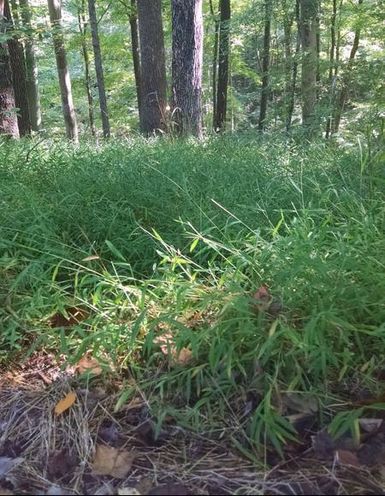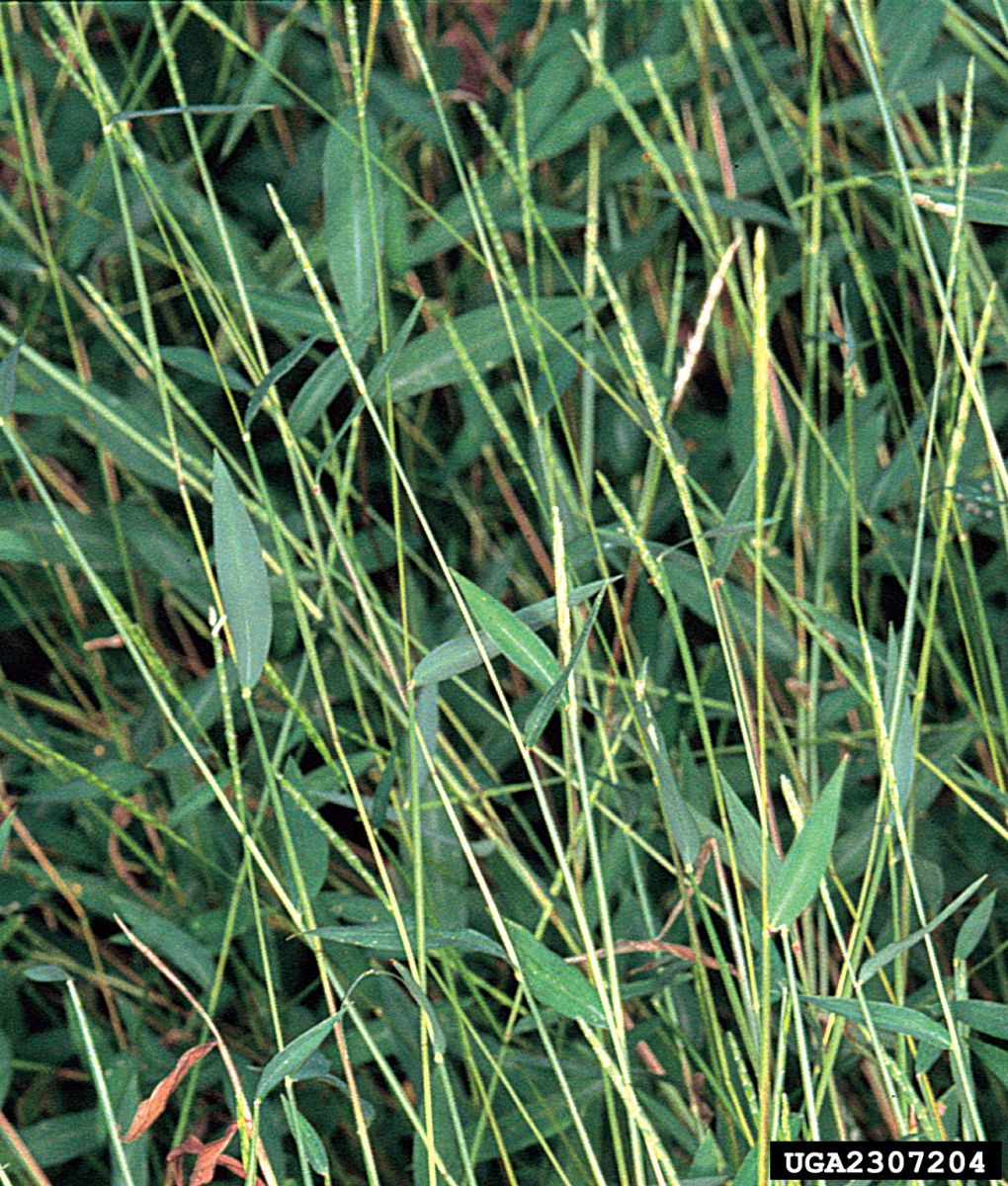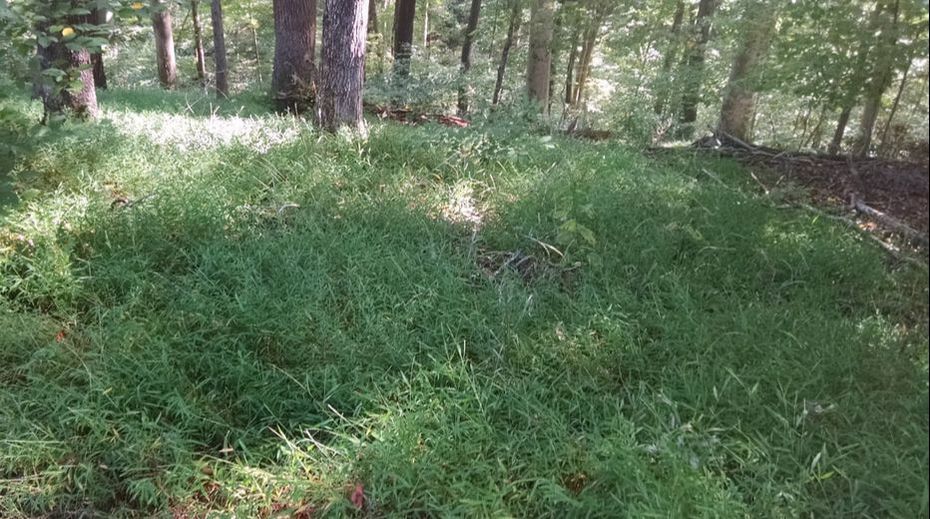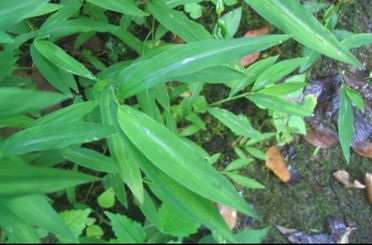|
Japanese stiltgrass
(Microstegium vimineum) Japanese stiltgrass is a non-native annual grass that was introduced to the southeastern U.S. from Asia in the early 1900s. It is highly invasive and is now found in much of the eastern U.S. This invasive grass is found in every southern Indiana county, including Monroe County. Why should I be concerned? Invasions of Japanese stiltgrass can quickly crowd out native wildflowers. Invasions also reduce tree regeneration and alter the growth of tree seedlings. Fortunately, killing this invasive grass with herbicides or hand-weeding can quickly restore the diversity of an area. Japanese stiltgrass produces abundant seed, spreads quickly, and can require years of management to eradicate. Landowners should be diligent in locating and eradicating new populations. Where you will find it? It is often found invading along roads, trails, and streams but can colonize a variety of habitats including sunny, open ridgetops and bottomland riparian habitats. Areas that have been disturbed (e.g. yards, streambanks, forests with windthrows or timber harvests) are especially vulnerable to invasions. How do you identify Japanese stiltgrass? Japanese stiltgrass can be identified by its relatively broad, bright green leaves that often form a shallow ‘v’ as they extend from the stem (see photo on the right below). Leaves also have a faint silver line down the mid-section. It is most often found in dense patches over three feet in diameter. It produces seed in September and October, while most native grasses produce seed much earlier in the year (June-July). |
Japanese Stiltgrass Fact Sheet
A printable version of identification and control information.
|
Controlling Japanese Stiltgrass
Detailed instructions on different methods of control.
|




